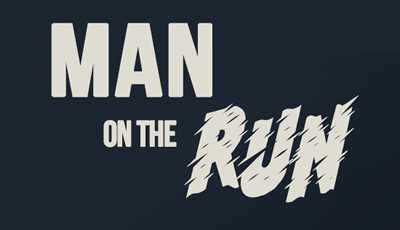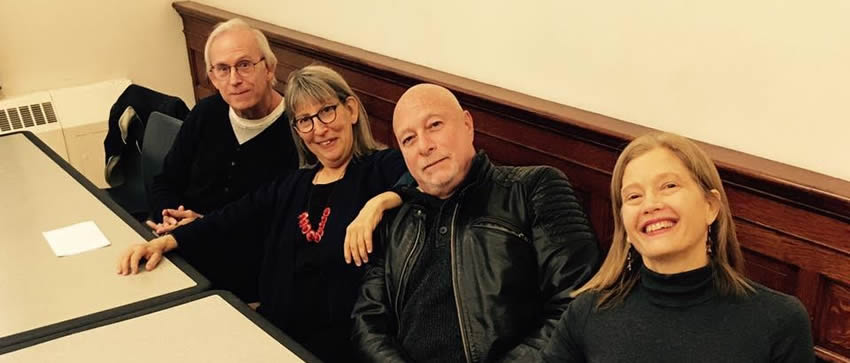

Features Up Close: Charles Salzberg
A Second Story Man
 By Dawn Ius
By Dawn Ius
Award-winning author Charles Salzberg had no intention of bringing back Francis Hoyt, the career criminal first featured in his acclaimed novel Second Story Man. But after publishing another book—Canary in the Coal Mine—and starting to think about what he wanted to write next, his mind wandered back to Francis.
Could he….reinvent himself?
“He’s actually a difficult character to write because he’s the polar opposite from me,” Salzberg says. “At least I hope he is. But he’s also compelling and challenging to write, simply because he’s so different from me.”
Salzberg decided to follow his instinct. The result is MAN ON THE RUN. Hoyt is “on the loose” after skipping his court appearance. He should be laying low…but Hoyt can’t resist the lure of a lucrative payout if he can pull off breaking into a “mob bank.”
Meanwhile, aspiring true crime podcaster Dakota Richards wants Hoyt for an entirely different reason—his cooperation on a project that will launch her career. But she’s not the only one hoping to bait Hoyt. Retired state investigator Charlie Floyd is also on the hunt.
In this interview with The Big Thrill, Salzberg talks more about his latest novel—and the characters both new and familiar to him.
In MAN ON THE RUN, Francis is pitted against Dakota Richards, a former journalist turned true crime podcaster. She finds herself in pretty deep in her research of the Francis Hoyt life story. What makes her the perfect match for Francis? Can you share a little about how her character took shape for you?
During the pandemic, I had all this at-home time to fill and so I began listening to true crime podcasts. It didn’t take long before I was hooked. As a former magazine journalist, I was impressed with the quality of research that goes into so many of these podcasts; and I was just as impressed with this new kind of journalism that lent itself to “deep dives” into crimes and criminals. So, when I was looking for a character strong enough and smart enough to go head-to-head with Hoyt, I realized a podcaster would be perfect. Even more perfect would be if she were a woman because Hoyt is someone who has made a career out of manipulating women, abusing them, underestimating them, using them when it’s convenient, throwing them aside when he’s finished with them. I needed a strong character who could hold her own against Hoyt, and Dakota fit the bill. She’s tough, ambitious, single-minded, and smart. In effect, she’s kind of a female Hoyt. They both want to use the other to further their own agenda. But where she differs from him is that she has ethics and morals.
We also see the return of Hoyt’s nemesis, retired state investigator Charlie Floyd. With two familiar characters, did you find MAN ON THE RUN harder, or easier to write working with a clean slate of characters?
A little bit of both. The upside is, Floyd was already a fully developed character (actually, he appears first in Devil in the Hole, as one of the two dozen or so narrators who tell the story of a man who murders his entire family then disappears.) The downside is that I can’t just write the same character over and over again. I have to allow him or her to grow, to change, and so when MAN ON THE RUN opens, Floyd has been retired for a year or so and he’s not adjusting to that life very well. And so, he’s kind of looking for something to challenge him and coincidentally, he finds Hoyt back in his life (you’ll have to read to find out why and how).

Salzberg with friend and writer Roy Hoffman, down in Fairhope, Ala., getting ready to head toward the Gulf. Turn left and they’d hit the Redneck Riviera, right the casinos in Biloxi.
Hoyt is asked to take on a pretty audacious task—clear the contents of a mobster’s “bank.” Obviously this is the kind of job we sometimes see in movies or have read about in heist books. Was there any research required to pull off this job? How did you work through the logistics of how the break in would work?
Once again, I have true crime podcasts to thank. I had no idea there was such a thing until I started listening to a wonderful series called Crimetown, which focuses on Providence, Rhode Island. It was there I learned about the concept of a mob bank which actually was “robbed” by a bunch of crooks and secretly sanctioned by the New England mob boss Raymond Patriarca. That’s where research came in—reading everything I could about that particular crime. But I didn’t use any of those details, but rather just the fact that there was such a “bank” and there was such a “set-up.” Once I knew that was feasible and believable that the “owner” of the bank could be behind the heist, I could shape it and use it for MAN ON THE RUN.
While this is first and foremost a thriller, the book makes a bold statement about the sometimes costs of “winning.” Aside from a good story, what do you hope readers take away from MAN ON THE RUN?
That was the original motivation for both Second Story Man and MAN ON THE RUN. For me, it’s very troubling how obsessed Americans are with winning, with being the best. Everything becomes a competition. And that old saw about it’s not whether you win or lose but how you play the game, is out the window. It’s all about winning, no matter what the cost. And there is a cost. I hope readers enjoy the book, simply for the story and the characters, but if they do start to think about the consequences of this obsession to win, I’d be very happy.
Is this the last we’ll see of these characters?
I’d never say never, and I have no plans to revisit them again, but if they call to me and if there’s a good story there, sure, I’d do it. I might decide to focus on Dakota Richards, if I think she has a compelling story to tell. It’s kind of fun to populate a world with characters who are interesting enough to revisit. And the truth is, without giving anything away, there is a possible storyline for Hoyt, and it could be summed up in one word, without giving anything away: vengeance. Hoyt is not the kind of guy who enjoys being taken advantage of.
Obviously a big fan of crime fiction. When did your love of the genre start? What are some of the novels or movies you consider influential?
When I was a kid growing up on the Upper East Side of Manhattan, I’d hop on a bus going down Madison Avenue (in those days, it was a two-way avenue), and go to a bargain bookstore down on 23rd street, where I could pick up remaindered books for a buck or two. Many of them were mysteries, which I enjoyed. But I didn’t get really hooked until I decided to write a detective novel, which turned out to be SWANN’S LAST SONG and it was then, in preparation, that I read Chandler, Hammett, MacDonald, Spillane, Nero Wolfe, pretty much everything I could get my hands on. But if you’re asking about influential writers, it wouldn’t be any of those. It would be Nabokov’s Lolita which when you think about it really is a crime novel (older man becomes obsessed with a 12-year-old girl, essentially kidnaps her and takes her across state lines.)
What’s next for you?
I’ve always been fascinated with things like ESP (years ago I actually interviewed a woman who has that ability and has helped the cops many times) and so I started to wonder what it would be like to have that ability but be very uncomfortable about it. So much so, that you tell no one you have it and try never to use it. The main character in what I’m working on now has that ability, and only one person in the world knows he has it: his best friend, whose college age daughter goes missing and he asks his friend to help. I wondered how that would work, and the only way to find out was to start writing, which is what I’m doing.
- AudioFile Spotlight: March Mystery and Suspense Audiobooks - March 17, 2025
- Africa Scene: Shadow City by Natalie Conyer - March 17, 2025
- The Ballad of the Great Value Boys by Ken Harris - February 15, 2025



